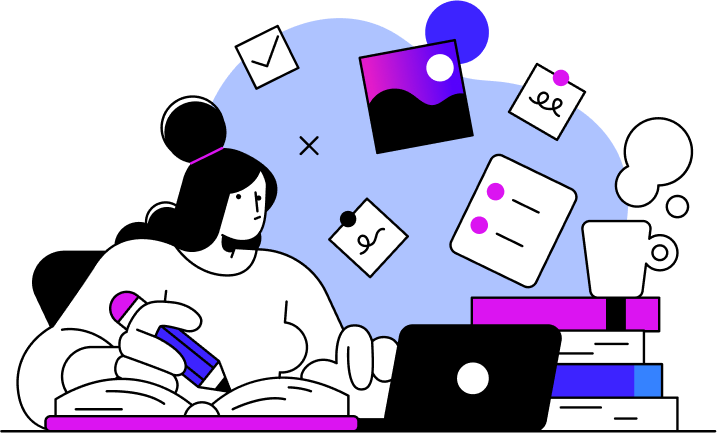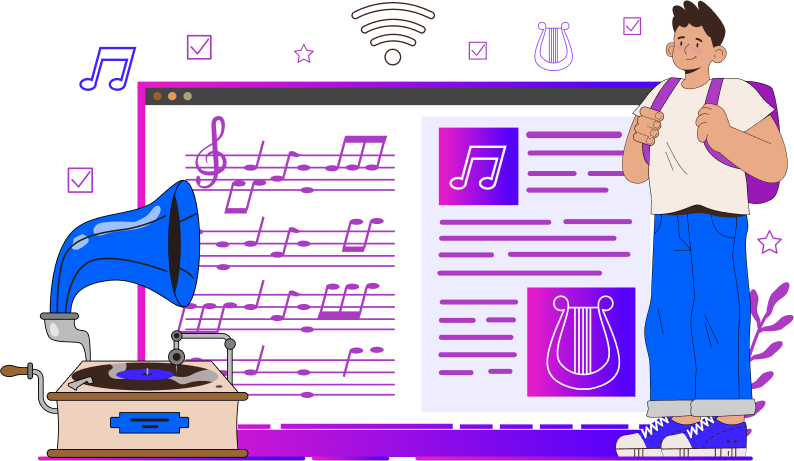6 AI Checkers
Brenda Thomas
Brenda Thomas has a Master of Arts in Humanities and has worked as an online instructor and instructional designer in higher education.

Checking the AI Checkers: Methods to Discourage Student's Inappropriate Use of AI.
The six (6) AI Checkers that I recommend to detect inappropriate use of AI are: experiment, policy, detection tools, focus on the process, review the sources, and communication. Keep reading to learn more about them.
In 2020, I wrote an article for this blog titled “Checking the Plagiarism Checkers.” A lot has changed since then regarding technology and education, but much is still the same. Advances in technology make it easier for students to complete assignments (sometimes dishonestly) and for educators to assess submitted assignments (sometimes uncritically), but the temptation for students to use technology to short-circuit their learning and for teachers to unquestionably rely on it to root that out continue.

Educators are not in agreement regarding if or how Artificial Intelligence (AI) should be used by students, and the purpose of this article is not to persuade people to a particular opinion about its use in educational settings. It is up to institutions and teachers to devise and enforce their own rules in that regard. This article is for those teachers who do not want students to use AI, for whatever reason(s), and are wondering what they can do to discourage its use.
In my 2020 article, I identified problems with uncritically relying only on plagiarism-detection tools, but I did not discount their usefulness. Those tools were just one of six methods teachers could use to guide students away from resorting to plagiarism and toward doing their own work. Just as it is unwise to uncritically accept the results of plagiarism-detection tools, it is misguided to unquestionably rely on the results of AI-detection to assess student work. Skepticism, and even rejection, of AI-detection tools is understandable.
After all, in 2023, some tools “misidentified” the Constitution of the United States and some Bible passages as being written by AI. But that anomaly does not mean all AI-detection tools are useless today. Rather, it is a reminder to not use only one tool and to not unquestionably rely only on AI-detection results to assess student work.
Even though the technology available for students to use to do their work for them continues to change, possible methods for discouraging such behavior remain basically the same as what I suggested in 2020.
The six suggestions below are not fool-proof ways to detect or prevent AI use nor are they steps to follow in any particular order, but they give teachers options other than uncritically and unquestionably using AI-detection tools that might render unreliable results.
6 Suggestions to Detect or Prevent Use of AI
Experiment
Experiment with different AI-detection tools before using them to identify AI use in
students’ work.
AI Policy
Articulate a clear, detailed AI policy to students.
AI Detection Tools
Inform students of the possibility that their submitted assignments might be run through AI-detection tools.
Focus on the Process
Design assignments in a way that facilitates tracking students’ work progression so the focus is on the process, not the product.
Sources
Stipulate which sources students should use and cite in some assignments.
Communicate
Communicate with students, in writing, in non-graded settings (email, discussion forums, etc.) in order to become familiar with their writing style and proficiency.
Teachers should use their own expertise first before running students’ work through AI-detection tools.
Based on my experience, AI-generated text usually is well-organized; authoritative sounding; logical in flow; and free of grammar, spelling, and punctuation errors. However, the generated text tends to be vapid, include statements that require a citation for their source (without providing an appropriate citation), and miss the mark when it comes to nuanced elements of assignment prompts. If, after reading students’ work, teachers suspect students used AI, then they might consider running submitted assignments through AI-detection tools to assist them in either confirming or questioning their assessment.
AI-detection tools are not completely useless or unhelpful, but they need to be used carefully and thoughtfully in conjunction with other methods. While detection is not prevention, it is part of encouraging students to do their own thinking and working on assignments for the benefit of their learning. Teachers can set an example for their students by not relying on AI when assessing submitted assignments.

Top Blogs
Related Success Stories

















